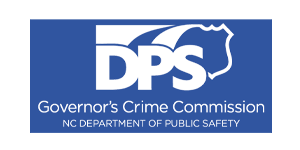- SAS案例_SAS统计软件的客户涵盖世界五百强中的知名企业 | SAS
- North Carolina Criminal Justice Analysis Center

Ensuring public transparency and one-stop access to crime data and analysis

A central place to easily obtain justice-related data from across the state.

Building safer communities, and allocating resources and services to those in need
North Carolina Criminal Justice Analysis Center achieved this using • SAS® Visual Analytics powered by SAS® Viya® in the cloud
The North Carolina Criminal Justice Analysis Center uses SAS Viya in the cloud to improve data accessibility and efficiencies in gathering and reporting state and county criminal justice statistics to stakeholders, policymakers and citizens
In Wake County, North Carolina, drug and narcotic violations are second only to simple assaults in the most reported crimes, according to data in the FBI’s National Incident-Based Reporting System (NIBRS). Given that scenario, are enough community services funded in the county to help assault victims and individuals dealing with addictions?
That’s the type of question the North Carolina Criminal Justice Analysis Center (CJAC) wants to help answer. CJAC is the state’s statistical analysis center, supporting the criminal justice data needs of the Governor’s Crime Commission (GCC), which serves as the chief advisory body to the governor and the secretary of public safety on crime and justice issues in North Carolina.
With the help of SAS, CJAC launched the North Carolina Justice Data Portal in 2022 to centralize criminal justice data collected by agencies across the state. The portal’s reporting tools visually depict crime data analysis at the state and county levels and make it publicly available.
CJAC Director Michelle Beck has more than 20 years of research analysis experience with North Carolina government agencies, including the Division of Adult Correction and Juvenile Justice within the Department of Public Safety. She has experienced firsthand the time-consuming, manual research and reporting processes traditionally needed to gather crime data from criminal justice stakeholders.
“The Justice Data Portal meets the ever-growing need for stakeholders, decision makers and the public to have an easy-to-use, regularly updated, central place to get North Carolina data from across the criminal justice continuum,” Beck says.
Justice Data Portal helps decision making
CJAC partnered with SAS to design the portal for users – from policymakers needing to make data-based funding decisions on victim services programs to community service providers trying to focus their efforts on the most critical needs and underserved areas.
Those stakeholders require criminal justice data that’s transparent, accurate and representative of the populations they serve. With such data, criminal justice professionals can see where crimes are increasing or decreasing, service providers can understand which initiatives are working as intended, and policymakers can see where more resources and funding are needed to build and maintain safer communities.
The portal’s initial phase represents the first step in meeting that need. CJAC has captured data from NIBRS, which is populated by criminal offense data reported by law enforcement agencies across North Carolina.
Using SAS Visual Analytics powered by SAS Viya, CJAC worked on analyzing the NIBRS data and developing publicly available dashboards through the portal.
In phase one, the portal delivers criminal activity reported by state law enforcement agencies at the county level. Reporting on regularly refreshed data displays monthly crime rates, crime types and crime locations.
“The new Justice Data Portal provides access to a rich source of information to identify underserved victims, review the effectiveness of existing victim services and programs, or guide technical resource development for service providers,” says Caroline Farmer, North Carolina GCC Executive Director.
Portal users can filter crime data by categories based on crimes against a person, property or society, as well as by types of crimes within each of those three categories.
In future phases, the portal will pull from additional data sources to produce interactive dashboards for the public.
Having one data source where everybody can see the exact same numbers will really advance trust in the data. There will be a common understanding of what the numbers portray.Michelle Beck Director North Carolina Criminal Justice Analysis Center
Cooperation among agencies expedites launch
Wanting to break away from cumbersome, manual research processes, CJAC didn’t have to look far to find the analytics capabilities, automation and data security it needed.
The North Carolina Government Data Analytics Center (GDAC) had created a similar environment in the cloud for the North Carolina Department of Insurance to run its Insurance Crimes Investigation System, as well as for the Criminal Justice Law Enforcement Automated Data Services (CJLEADS), a centralized database of information about offenders for use by state and local government criminal justice professionals.
Beck says it was an easy decision to deliver the power of analytics in the cloud.
“GDAC had already worked to build environments like this, and we could leverage the previous work, existing relationships and processes that were already in place, such as getting and updating data from state agencies,” she explains. “We’re benefiting from what’s already been set up, which allows us to get up and running quickly and realize value faster.”
By extending the relationships already built by running the solution in the cloud, the GDAC team is able to scale and grow the solution as its organization grows. This also gives GDAC a single point of ownership for its analytics in the cloud, saving it time and effort when engaging multiple vendors.
GDAC’s assistance, combined with federal grant funding to build out the reporting environment, gave CJAC a head start. The agency then turned to SAS to make the Justice Data Portal a reality.
“The SAS people we’ve worked with have been extraordinary,” Beck says. “It’s amazing how much they helped us make the right decisions, even before we were really clear where we were going. They made the perfect trails through the forest for us, and the way they were able to understand the needs for the data early on has been tremendous.”
SAS worked with CJAC on the process to access the NIBRS database, understand and clearly represent the data, and ensure the analysis was sound.
CJAC team combines training with user-friendly design
Although Beck has relied on SAS software since graduate school, she and her team members had never used SAS Visual Analytics before. They took advantage of knowledge transfer sessions and one-on-one training offered by SAS to learn how to verify data, build reports and get the most from the solution.
“It’s amazing how far we’ve come and been able to progress in our knowledge of SAS and SAS Visual Analytics,” Beck says. “If I was ever going to be in a situation for a trust fall, I would want this SAS team to be on the catching side. They’ve taken us from ground zero of not knowing what we wanted or how to get there to talking us through each phase, being there for us and building our confidence in the decisions we were making.”
Beck’s team is on track to become self-sufficient in producing data sets and reports without direct support from SAS. They’ve made ease of use a priority for the public portal, which clearly presents insights by county and by the state with summary points that take the guesswork out of reading graphs.
Analyzing data to better serve crime victims
The Governor’s Crime Commission administers nearly $72 million in grant funds to support criminal justice programs across North Carolina, focused on issues ranging from domestic violence to opioids.
Data accessible through the Justice Data Portal can help decision makers determine which programs or communities will receive those grants and help grant recipients focus their services.
“Service providers who apply for grants can find out the number and types of assaults in their county, and they’ll be able to modify programming based on those types of crimes they’re seeing to meet the needs of the victims,” Beck says.
Demographic data further helps providers determine if they’re offering appropriate services based on the prevalence of crimes involving juvenile victims, for example.
North Carolina Criminal Justice Analysis Center – Facts & Figures
5
staff members
411
law enforcement agencies reporting data
93%
of state jurisdictional population represented
One version of the truth to support criminal justice needs
Moving from siloed sources of information throughout the state to an integrated one-stop shop for criminal justice data brings North Carolina closer to a single source of truth.
“I’ve been in data analysis with the state for more than 20 years, and I’ve seen that it can take a while for people to trust data,” Beck says. “Having one data source where everybody can see the exact same numbers will really advance trust in the data. There will be a common understanding of what the numbers portray.”
Currently, law enforcement agencies can choose whether or not to report incidents to the NIBRS database, a key data source for the Justice Data Portal. The portal displays the coverage of the population by reporting agencies for each county.
“There’s one county that has only 35% of their population covered by agencies that report to NIBRS, so that data isn’t very robust or reliable,” Beck says. “I’m hopeful agencies that aren’t currently reporting will see the benefit of making that type of information available for their county.”
Once CJAC adds data related to victim-offender relationships from NIBRS, it will be able to provide a more complete picture of crime in North Carolina. And by incorporating additional data sources in the future, the agency can facilitate more robust, comprehensive analysis of criminal justice data within the state, including an offender’s criminal justice journey.
In addition to the Justice Data Portal, the SAS solution enables CJAC staff members to better support the criminal justice data needs of the Governor’s Crime Commission and other stakeholders. “We’ve gotten some questions we’ve been able to answer by doing our own analysis in the SAS Viya environment with the accessible data that’s updated every month,” Beck says. “That timely in-house analysis to answer complicated questions wouldn’t have been possible without this data solution.”
An ongoing partnership
Beck’s vision for CJAC includes an ongoing partnership with SAS for the agency’s analysis solutions. “We’re confident in SAS’ ability to serve all the needs we have,” she says.
For other states considering similar public data analysis initiatives in criminal justice, Beck encourages them to move forward.
“It’s time for this data to be available to anyone who wants information about the criminal justice system,” Beck says. “Our SAS solution – backed by a team of experts who are well-versed in data security and privacy – provides for much sounder sleep at night because we know what we’re doing is being done well, and we’re meeting all the standards we must adhere to.”
本文中所展示的成果取决于文中所述的特定场景、业务模式、数据输入和计算环境。每位SAS客户的体验都因其业务和技术特性而不同,请勿将本文观点视为通用观点。实际的成本节约、成果和效果最终取决于每位客户的实际配置和条件。SAS不保证每位客户都能取得本文类似的成果。SAS仅对SAS的产品和服务提供保证,请参阅SAS的产品服务质保条款,本文中提及的内容不能视为质保条款。客户可以按照合约商定的条款分享SAS软件实施项目的成功案例,相应的品牌和产品名称归属相应的公司所有。